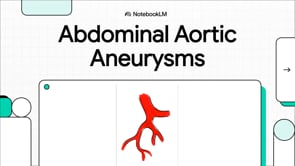Detta fall avser en 63-årig kvinna med reumatoid artrit som utvecklade allvarliga andningsbesvär och symtom på hjärtsvikt. Efter en omfattande utredning påträffades onormal mjukvävnad kring hennes hjärta, stora blodkärl och njurar. Sjukvårdsteamet övervägde flera sällsynta tillstånd innan den mest sannolika diagnosen kunde fastställas genom en noggrann analys av hennes symtom, laboratorieresultat och bildundersökningar.
Ett komplext fall: Oförklarad hjärtsvikt hos patient med reumatoid artrit
Innehållsförteckning
- Fallpresentation
- Medicinsk historia
- Diagnostik och resultat
- Bilddiagnostik
- Differentialdiagnoser
- Klinisk bedömning
- För patienter
- Källor
Fallpresentation
En 63-årig kvinna sökte vård på Massachusetts General Hospital på grund av andningsbesvär som pågått i två månader. De första tecknen var att hon fick kämpa vid vandringar med vänner, något som var ovanligt eftersom hon tidigare ofta gick i täten. Inom två veckor utvecklade hon torrhosta, och andningsproblemen förvärrades så att hon behövde vila efter bara 10 minuters träning på löpband eller crosstrainer.
Symtomen blev så allvarliga att hon började sova med tre kuddar för att kunna andas. Hon upplevde också buksvullnad, aptitlöshet och illamående efter måltider. Dessa symtom började drygt ett år efter att hon diagnosticerats med reumatoid artrit, en autoimmun sjukdom som ger ledinflammation och smärta.
Medicinsk historia
Femton månader innan nuvarande symtom debuterade ställdes diagnosen reumatoid artrit på en reumatologmottagning. Hon hade då haft svullnad och stelhet i handlederna i sex månader, samt hudåtdragning på flera fingrar. Undersökningen visade svanhalsdeformiteter på båda händerna, och röntgen avslöjade marginella erosioner i handlovarna.
Blodproverna visade normalt antal vita blodkroppar, normal sköldkörtelfunktion och inga avvikelser i övriga blodvärden. Viktigt att notera är att flera antikroppstester var negativa, inklusive för andra autoimmuna sjukdomar samt infektioner som borrelia och hepatit. Senkningsreaktionen (SR) var förhöjd till 55 mm/timme (normalt 0–20), och C-reaktivt protein (CRP) var högt med 25,2 mg/liter (normalt <8,0).
Hon var positiv för reumatoid faktor och anti-CCP, vilket stämmer med reumatoid artrit. Behandling med metotrexat inleddes, och ledbesvären förbättrades under de följande två månaderna.
Övriga sjukdomar inkluderade högt blodtryck, diabetes, förhöjda blodfetter, tidigare meningeomkirurgi och ett positivt tuberkulintest (men negativt specifikt test för tuberkulos).
Diagnostik och resultat
När andningsbesvären uppstod genomgick patienten omfattande utredning. Blodproverna visade en försämring av inflammationsvärdena och anemi:
- SR steg från 55 till 70 mm/timme
- CRP ökade från 25,2 till 47,1 mg/liter
- Hemoglobin sjönk från 12,5 till 9,8 g/dl (normalt 12,0–16,0)
- NT-proBNP (hjärtsviktsmarkör) var förhöjt till 389 pg/ml och steg sedan till 672 pg/ml (normalt <900)
Övriga prover visade normal sköldkörtel- och njurfunktion samt normala leverenzym. COVID-19-test var negativt. EKG visade onormal hjärtrytm, T-vågsinversioner (tecken på hjärtpåfrestning) och förlängt QTc-intervall på 509 millisekunder (ökad risk för arytmi).
Bilddiagnostik
Flera bildundersökningar avslöjade avvikelser:
Bröströntgen visade diffusa retikulära förändringar i lungvävnaden och förstorad hjärtkontur. Bukultraljud påvisade levercystor, pleuravätska och hydronefros (njursvullnad) bilateralt.
DT-bilder av bröst och buk visade:
- Perikardievätska och -förtjockning
- Vänstersidig pleuravätska
- Pararenell vätska bilateralt
- Infiltrativa förändringar i mediastinum
- Omfattande mjukdelsförtjockning retroperitonealt kring njurarna och aortan
Ekokardiografi visade normal hjärtstorlek och pumpfunktion, men en oregelbunden ekogen struktur (~2 cm) intill aortaroten samt ekogent material i perikardiet.
MRT-hjärta visade patologisk kontrastupptagning i perikardiet och mjukdelsödem i mediastinum, men ingen påverkan på hjärtmuskeln.
Differentialdiagnoser
Flera tänkbara orsaker övervägdes:
Infektion: Med tanke på immunsuppression (metotrexat) utreddes tuberkulos och borrelia, men tidigare prover var negativa och hon hade ingen feber.
Cancer: De utbredda mjukdelsförändringarna kunde tyda på lymfom eller cancer, men hon saknade viktnedgång, nattliga svettningar eller förstorade lymfkörtlar.
Inflammatorisk sjukdom: Hennes reumatoid artrit kunde teoretiskt ge ovanliga manifestationer, men den omfattande vävnadsinflammationen var atypisk för reumatoid vaskulit.
IgG4-relaterad sjukdom: Denna immunmedierade sjukdom kan ge retroperitonealfibros och pankreaspåverkan, och passar delvis med bilden.
Erdheim-Chester sjukdom: Denna sällsynta histiocytos påverkar ofta flera organsystem. Perikardpåverkan (13% av fallen), kärlpåverkan (17%) och myokardinflammation (25%) stämde väl med fynden. Bilderna av peri-aortal påverkan och omfattande mjukdelsförändringar var starkt indicerande för denna diagnos.
Klinisk bedömning
Läkarteamet bedömde att Erdheim-Chester sjukdom var den mest sannolika förklaringen, en sällsynt sjukdom där onormala vita blodkroppar ansamlas i vävnader i hela kroppen. Stödjande fynd inkluderade:
- Mjukdelsförtjockning kring aorta, njurar och hjärta
- Perikardpåverkan som orsakade hjärtsvikt
- Förhöjda inflammationsvärden
- Avsaknad av tecken på infektion eller cancer
En vävnadsbiopsi rekommenderades för att säkerställa diagnosen innan behandling kunde inledas.
För patienter
Detta fall belyser viktiga lärdomar för patienter med autoimmuna sjukdomar:
För det första: Nya symtom som andningsbesvär hos någon med reumatoid artrit ska inte avfärdas som en del av den vanliga sjukdomen. Denna patients ökade andningsbesvär under träning och behov av att sova upprätt var tydliga varningssignaler.
För det andra: Autoimmuna sjukdomar kan ibland påverka oväntade organ. Reumatoid artrit drabbar vanligen leder, men kan sällan ge inflammation i hjärta, lungor eller njurar, eller medföra andra autoimmuna tillstånd.
För det tredje: Diagnos kräver ofta många olika undersökningar. Denna patient genomgick blodprov, bildundersökningar (röntgen, DT, MRT, ultraljud) och hjärtester (EKG, ekokardiografi). Ibland krävs även biopsi.
Slutligen: Sällsynta sjukdomar kräver expertutredning. Läkarna i detta fall övervägde flera ovanliga tillstånd innan de hittade den rätta diagnosen. Patienter med komplexa sjukdomar bör ofta remitteras till specialister på större sjukhus.
Om du har en autoimmun sjukdom och får nya symtom – särskilt andningsbesvär, oförklarlig svullnad eller nedsatt kondition – är det viktigt att snabbt kontakta din läkare. Tidig upptäckt och behandling ger bäst möjliga utfall.
Källor
Originalartikel: Fall 18-2025: En 63-årig kvinna med ansträngningsrelaterad dyspné
Författare: Malissa J. Wood, Carola A. Maraboto Gonzalez, Reece J. Goiffon, Eric D. Jacobsen, Bailey M. Hutchison, Dennis C. Sgroi, Eric S. Rosenberg
Publicerad: The New England Journal of Medicine, 26 juni 2025
DOI: 10.1056/NEJMcpc2300897
Denna patientanpassade artikel bygger på en peer-granskad fallbeskrivning från Case Records of the Massachusetts General Hospital.




